How to Afford 2 Sizes of Dress Forms

Hi funsters! One of my most regularly commented-upon photos on Instagram is of my darling plus size sewing dress form (also known as a mannequin, or dressmaker's dummy). As there's so much interest, I thought I'd do a little round-up of what's available out there in the way of plus size sewing dress forms, and whether you actually need one.
Let's start with that question first: do you need a dress form?
Short answer? Probably not.
In fact, I didn't have one until I started developing sewing patterns, and the main reason I bought it is because it's really hard (read: basically impossible) to find plus size fit models. Fit models have to have measurements that meet a precise standard, and their life is dedicated to staying *exactly* the same size (for which they are paid the big bucks). Can you even imagine?! I look at a baked good and I change size. Anyway, that wasn't going to happen for Cashmerette Patterns, and I myself am not exactly in one size (I'm between the 18 G/H and 20) and am more busty/less hippy than average, so I didn't want to use myself either. Enter, my Alvaform, which is used for fitting, along with a range of real women.
That said, if I wasn't drafting, I don't think that I'd use a form. Why might you want one? There's a couple of reasons (and I'm sure many more!):
- For draping – this type of pattern / garment making requires a form, as you pin and drape the fabric directly onto the form itself. Note that if you're doing this, you need a pinnable form – not all of them can take pins.
- For checking fit when it's hard to do it yourself. If you don't have a sewing buddy, it's hard to tell how something fits from behind! Putting it on a form will help you check. That said, your dress form needs to be *exactly* the same size as you for this to be terribly useful – and remember, measurements matching aren't enough, because you can have a 46″ bust measurement because you have a small back and large bust, or because you have a large back and small bust, so you need a form that's the same proportions as you too.
- Hemming, again if you're doing it yourself. It's hard to hem straight if you're having to lean down a lot, or depending on measuring. As our bodies are far from a flat plane, you may find to have an even hem it actually has to go up and down, and that's really hard to tell on yourself, much easier to tell on a form.
- To look pretty. Yeah, honestly, a lot of people I know with forms mostly use them for display!
What to look for in a plus size dress form
If you're interested in buying a form, the first thing you need to consider is what you're going to be using it for, because that will dictate what type you need! Here are possible characteristics:
- Pinnable (for draping)
- Has head/arms/legs
- Proportions: a surprising number of dress forms think that a size 20 body is just a size 10 stretched in all directions… which I think we all know is bizarre. A lot of them have a consistently small bust and flat stomach, so depending on your needs, this is something to consider.
- Is adjustable (some have wheels and cogs which make them larger or smaller)
- Is going to be used for fitting – in which case, needs to be very similar to you proportionately and in measurement
- Weight – some of them are super heavy vs. others, so consider if you'll need to move yours or not
- Price – there is wildly ranging prices for forms, of which more below.
Plus size dress form options
Alvaform
My lovely dress form is a plus sized Alvaform, from the company Alvanon. The plus form is available in sizes (US) 16 – 24, and I bought an 18, which corresponds almost exactly to my pattern size 18 C/D. I use a bra with chicken fillets to mimic larger cup sizes, together with trying things on real women of different sizes.
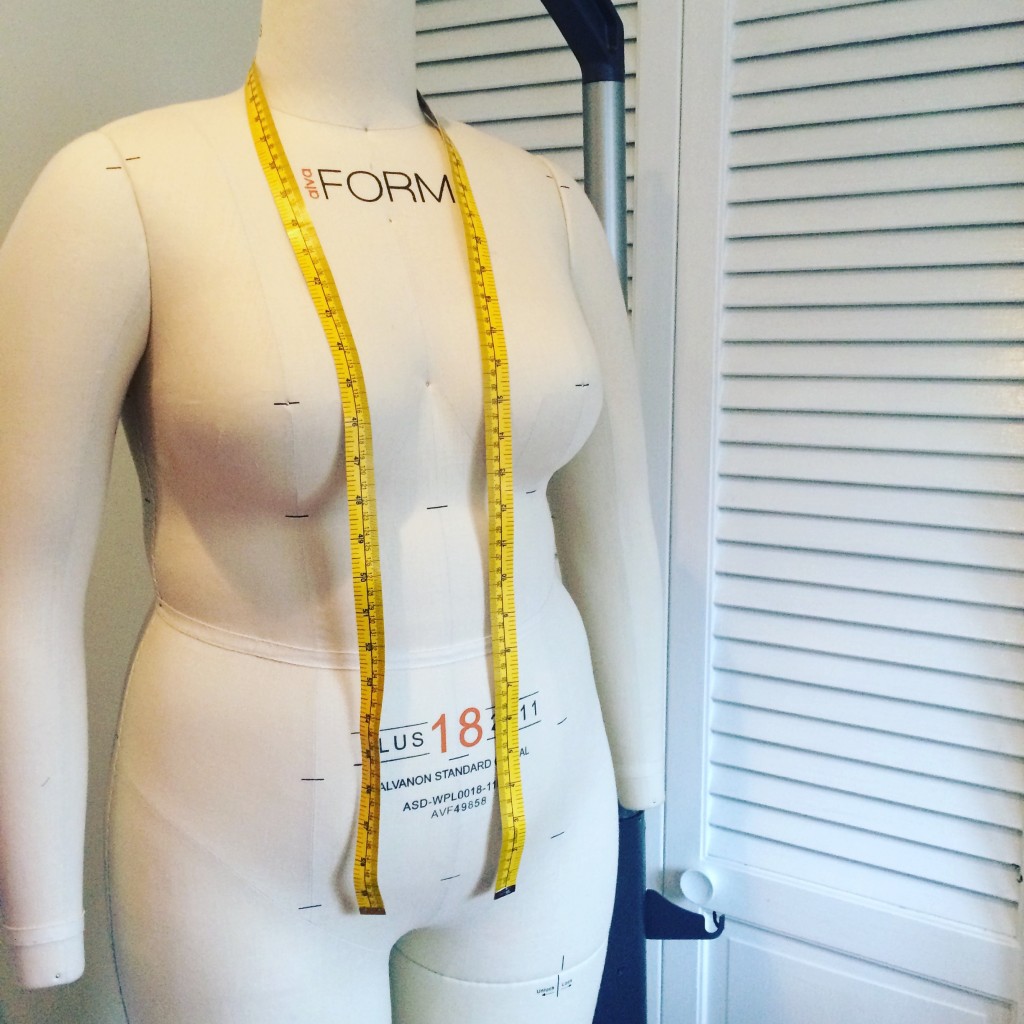
There are many awesome things about it: Alvaform forms are based on a survey of real women's measurements, and as such, actually look *way* more like a person than almost all other forms which are like some weird cartoon idea of a woman, and assume that a size 18 is just a size 10 expanded in all directions.
The plus version has a slightly forward/rounded shoulder, a swayback, a squishy tummy (I enjoy poking it when I walk by), and a tipped waist (it goes down from back to front). Alvaforms are also the most commonly used forms by industrial clothing manufacturers, and they have all sorts of claims about how they have fantastic fit etc. Mine has removable arms and legs (but no head!) and it hangs from a really heavy frame which keeps it stable, but allows you to spin the form around.
The downside? It's seriously expensive: once you've added in exceptionally expensive shipping from China, it's several thousand dollars (you have to call them for an exact quote based on what you're ordering and their stock levels). That's because it's really meant for industry use and not home sewists, and it's such high quality both in terms of how it was developed and the physical thing. For me, it was a tough decision whether to buy it and have such a big start-up cost, but in the end I'm happy I did, especially given how many people have given me great feedback about the fit of their Appleton and Washington dresses! But this is really strictly for other pattern designers, or hobbyists with a lot of money to burn.
Ok, on to less expensive options!
Wolf
Wolf are a well-known major dress form manufacturer and you've probably seen them around as they're very common. You can immediately see that they don't have such a realistic body shape compared to Alvanon, but many people are happy with using theirs. Big issue though: they only go up to an 18, which curiously is a 41.5″ bust – 32″ waist – 43″ hip (significantly smaller than an Alvaform 18) – full measurement chart here. So this is only going to be good if you're on the smaller size. They're priced around $900.
PGM
PGM is another mainstream supplier of forms, and they have a plus form that goes up to 26L, plus they do special order forms up to a 30L (which is 55.5″ bust – 48″ waist – 57.5″ hip). They claim to have a "realistic" shape but it doesn't really look like any plus size woman I've ever seen, I have to say. They're priced at $568.
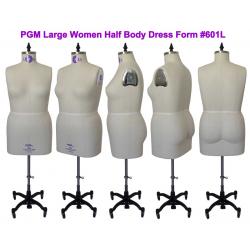
Fabulous Fit
Fabulous Fit sell forms, and also sets of pads that you can use them to adjust more specifically to your proportions. This is a great choice if you're not a "standard" plus size, and want the ability to adjust – they have a bunch of advice on how to use the pads to get a good result. Their plus size form comes in a 16 or 18, but it's not cheap at just under $1,000 for the half body and over $2,000 for full body.
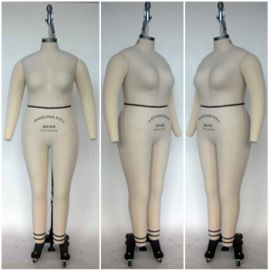
Uniquely You
Now we're getting into more affordable! This is a foam dress form, and it goes up to 51″ bust – 44″ waist – 50″ hip. It definitely looks a lot more basic than the ones above, but then it's only $150 so it's a bargain in comparison!

Dritz
Dritz have a range of adjustable dress forms, which are reasonably priced in the $150 – 200 range, and go up to 54″ bust – 47″ waist – 57″ hip. They are definitely a little on the flimsy side, but they do allow you to adjust the size to your needs. You could also combine a Dritz form with Fabulous Fit pads to get a closer fit.
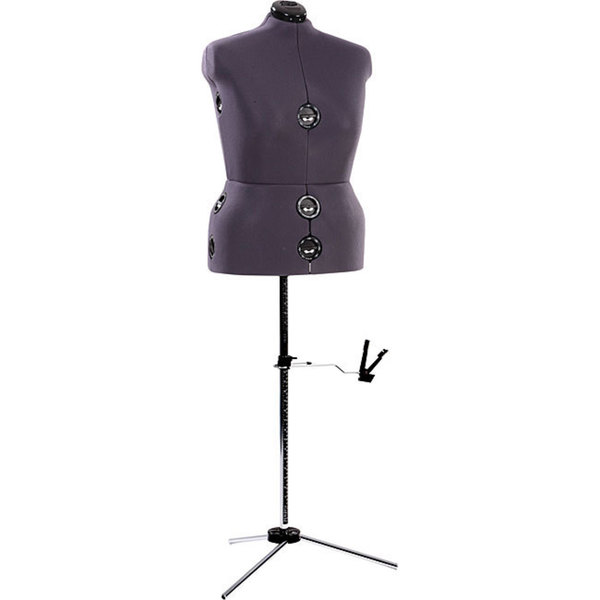
Ditto Form
The most innovative option of the lot is Ditto Form, a company that 3D models your body and makes a form that exactly reflects your body! This is especially useful if you have asymmetries, or a particularly non-standard set of measurements. The downside is the right now you can only have the scan done in Washington D.C., although they are looking to expand to other locations. There are two versions: one where they deliver it all made to you for $795, and a "do it yourself" version for $395 – 515 depending on size.
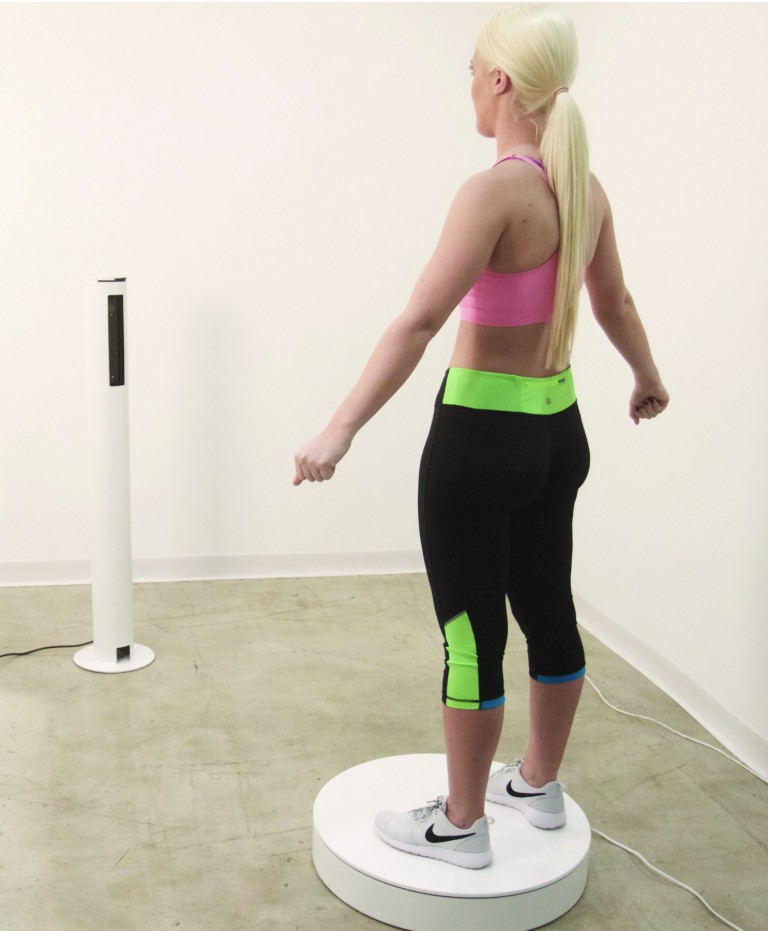
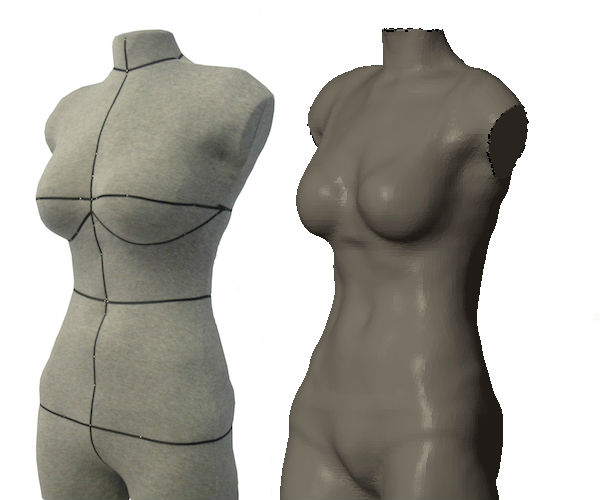
For more about DittoForm, check out Stephani's blog post on her experiences.
Finally, if none of those appeal or are all too pricy (I'm aware that some of these are way beyond the average person's budget) there's another option: make your own plus size sewing dress form!
The most well-known approach is to use duct tape, and there's a fairly comprehensive tutorial over at Threads. They also have instructions for using papier mache (which looks very labour intensive!), or paper tape. There are many other approaches, but I thought this one from Ikat Bag was particularly interesting.
Phew! I hope this was helpful. Do you own and use any of these plus size dress forms, or are there others you'd recommend? There are many different options out there, so I've only highlighted a fraction of what's available.
Are you interested in more information on curvy sewing, including new pattern launches and special discounts? Then sign up for the Cashmerette newsletter!

Save Save
Source: https://blog.cashmerette.com/2016/02/plus-size-sewing-dress-forms.html
0 Response to "How to Afford 2 Sizes of Dress Forms"
Post a Comment